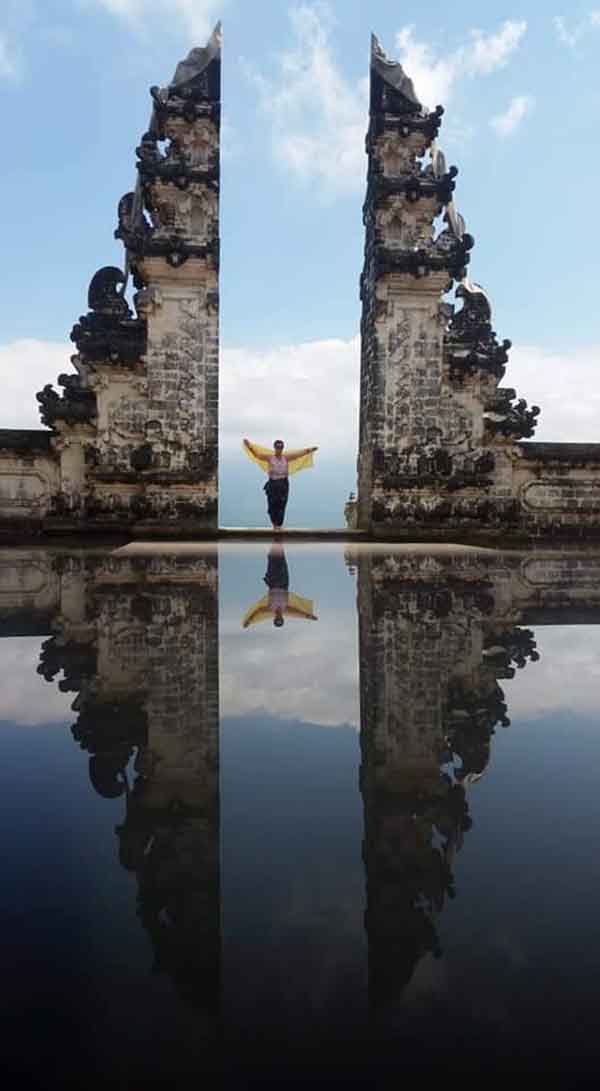Bali, an island province of Indonesia, embodies a remarkable confluence of artistic expression and spiritual vibrancy, revealing a tapestry woven from the threads of its rich cultural heritage. This dynamic interplay of color and spirituality not only enriches the island’s aesthetic allure but also offers a profound insight into the Balinese worldview, characterized by cultural relativism—a perspective that encourages the understanding of cultural practices within their own context. Through this lens, one is invited to delve into the multifaceted dimensions of Bali’s art and culture, where an intimate relationship between creativity and spirituality persists.
At the heart of Bali’s cultural narrative lies the omnipresent influence of its predominant religion, Hinduism, which permeates daily life and artistic endeavors. The Balinese sense of spirituality transcends mere religious practice; it infuses art, dance, music, and community rituals with a sacred essence. Temples dot the landscape, each adorned with intricate carvings and vibrant offerings, signifying the harmonious relationship between humans and the divine. The Balinese artistic dedication to this relationship serves as both a form of worship and a means of preserving cultural identity.
To understand this symbiosis, it is pivotal to examine traditional Balinese art forms such as painting, sculpture, and textile weaving. Balinese paintings often depict mythological stories and scenes from daily life, rendered in vivid colors that evoke the island’s lush natural environment. These works are not merely decorative; they are imbued with philosophical meanings, often reflective of the Balinese belief in the cyclical nature of life. Indeed, the use of color is symbolic—a visual language that conveys deeper narratives. Red may represent love or bravery, while blue often signifies calm and spirituality. Such symbolic use of color invites observers to transcend superficial interpretations and engage with the underlying metaphysical themes present in Balinese art.
Further demystifying this vibrant tableau are the traditional forms of performance art—most prominently, dance. The Balinese dance is a storyteller, a means of narration where the body becomes a canvas of expression. Dances such as the Legong and Barong are not simply entertainment; they are intricate rituals that embody spiritual symbolism and historical narratives. Each movement, each gesture is crafted with precision, highlighting the dancer’s embodiment of cultural tenets. Through such performance, the audience is enveloped in the spiritual ambiance of Bali, prompting a shift in perspective from the secular to the sacred.
Moreover, the communal aspect of art in Bali cannot be underestimated. The island’s culture prizes collective participation, especially in traditional rituals. Paintings, sculptures, and dances often emerge from communal collaboration, manifesting the idea that art is a living entity shaped by community values and shared beliefs. This communal ethos fosters an environment where creativity is not merely an individual act but an expression of collective identity, thus reinforcing societal bonds. The cyclical creation and performance of art in this context encourage a participatory engagement, where both artists and spectators contribute to the cultural narrative.
The comparative aspect of cultural relativism is vital when viewing Balinese art and its spiritual dimensions. From this standpoint, one can appreciate the nuances of Balinese culture without imposing external paradigms of judgment. Art in Bali exists within a context that transcends Western conventions of aesthetic preference. Instead of viewing their art as a simple form of entertainment or commercial product, a more profound appreciation emerges when one acknowledges the integral role art plays in ritual and spirituality. Such an understanding invites respectful curiosity and an acknowledgment of cultural diversity, highlighting the significance of contextual interpretation.
As tourists flock to the island, often drawn by its picturesque landscapes and vibrant arts scene, a duality emerges—one that requires a mindful approach. The commercial aspect of Balinese arts, driven by tourism, often leads to a commodification that risks diluting the spiritual essence of these forms. Artworks become souvenirs rather than sacred expressions, raising essential questions about authenticity and preservation within a globalized cultural economy. This interaction prompts a reevaluation of the visitor’s role: can one engage with Bali’s art without disrupting its intrinsic values?
As such, exploring Bali’s vibrant art and culture invites one to reflect on wider anthropological questions concerning cultural survival and transformation. The intersection of globalization and local traditions can be viewed as a vibrant tapestry, where threads of contemporary influences intermingle with the age-old practices of the Balinese. This dynamic reconstitution of cultural forms allows for innovation while simultaneously anchoring the past, illustrating a resilient adaptability that is emblematic of Bali’s spirit.
Ultimately, Bali is not merely a destination; it is an ethos, a narrative steeped in artistry that seamlessly intertwines with spirituality. Through the prism of cultural relativism, one can engage with Bali’s vibrant art and culture not only as an observer but as a participant in a living tradition. It is an invitation—an opening to explore themes of identity, community, and transcendence, where color meets spirituality in complex, often surprising, harmonies. By fostering an appreciation of this intricate interrelationship, one cultivates a deeper understanding of human creativity and belief, ultimately revealing the canvas of life that Bali, with its kaleidoscope of colors and spiritual undertones, so magnificently embodies.
